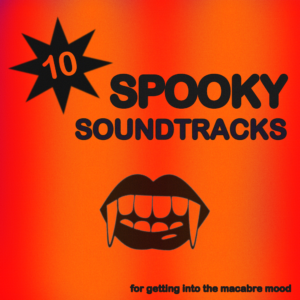Ladies Behind Lenses is a column that explores films directed, produced, and written by women who are kicking ass within the male-centric world of cinema.
Susan Seidelman is probably best known for directing the charming Desperately Seeking Susan but it was her debut, Smithereens (1982) that first made a splash within the film festival circuit. It would become the first American independent film to be selected by Cannes to compete for the Palme d’Or. Seidelman’s filmography since then has consistently been celebrated for centralizing feminist themes around identity and desire. Since her debut, she has leapt from promising indie filmmaker to a mainstream American director – yet she still tactfully manages to blend alternative methods of direction and feminist rhetoric with popular, mainstream interests.
The idea for Smithereens came about while she was still at NYU film school in the late 70s. The low-budget albeit stylish film is set in the East Village and was shot docu-style on stunning 16mm which offers the appropriate grittiness the East Village had at the time. It features a stellar soundtrack by The Feelies and co-stars Richard Hell (resident NYC punk figure). Smithereens follows, Wren (Susan Berman), a fame mongering young woman desperate to escape the confines of suburban New Jersey (much love to Jersey <3) and break into the already wavering punk rock scene. Her obsession for fame and inclusion leads her to use people she’s around in just about every capacity in her search for something in the right direction. However, we soon realize that this runaway twenty something year old has no apparent talent for anything really – anything but self-advertisement (she’d fit in pretty well today if she were around). We watch as she flip flops between Eric (Richard Hell) a scheming narcissist who apparently has some kind of record deal, and Paul (Brad Rijn) a sweet guy from Montana who is smitten by Wren and happens to be living out of his van along the West Side Highway. She eventually dumps Paul when Eric loosely promises her a future in Los Angeles to which she exclaimed, “I just want to be in a swimming pool eating tacos and signing autographs, that’s all”.
We painfully watch as Eric, who is broke at this point, manipulates her into posing as a prostitute to con a man and steal his money. Eric obviously bails out the next day with the money they gathered together- nowhere to be found. Wren, shocked by his sudden departure, goes back to try and make amends with sweet Paul. However, it turns out he’s left too; he sold his beloved van and is probably somewhere in New Hampshire now.
You kinda expect Wren to get away with the things she tries to pull off. However, she just seems to hit wall after wall – being duped and dumped by Eric (duh) and left by heartbroken Paul. The film ends with her luck finally running out. It carefully depicts the harsh reality of the city- it‘s power to chew you up and spit you out. Smithereens exemplifies the magical version of New York that people have romanticized for so long – an apocalyptic wasteland, a much edgier and riskier place. Although the New York in Smithereens is definitely long gone, Wren’s character – flawed, spirited, with tenacity for survival – is a character easily identified with still today.
Seidelman’s East Village odyssey examines issues of identity and desire from a distinctly female perspective. In fact, most of her films portray women trying to find their voice in the world; navigating their way through self-reinvention and fulfillment. Her films all share a sense of humor that pervades the sadness found within her characters. Seidelman, as she puts it, “uses humor as a way of making observations about how we live and what makes us human” – CB. An evocative film still relevant in many ways today (35 years later!); Susan Seidelman’s masterful debut paints a humorous yet unsettling portrait of a young woman trying to find her place in the world.
Watch the trailer to Smithereens below:
Film Column by Ida Yazdi. Find her online at @idaym.












